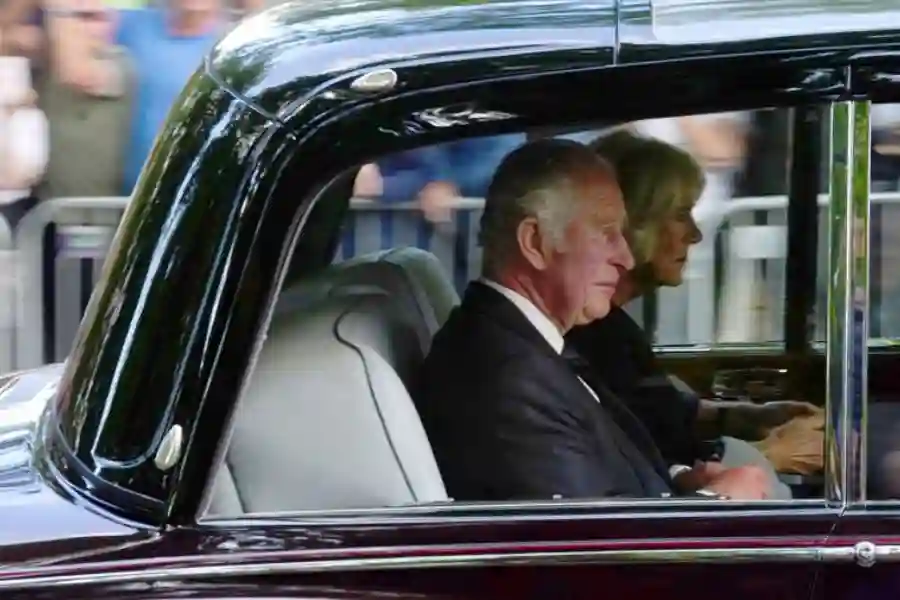In a world where every flight and fuel-burning engine counts against our planet, King Charles’s sustainable travel initiatives offer a timely and powerful example of how high-profile leadership can spark meaningful change. From choosing electric vehicles over traditional convoys to championing carbon offset strategies, the King isn’t just making headlines; he’s paving roads to a cleaner, more responsible future for travel.
Whether you’re a policymaker, environmentalist, or eco-conscious traveler, something is compelling about how the British monarch is walking (and sometimes driving) the talk on climate responsibility.
🔑 Key Takeaways:
- King Charles prioritizes low-carbon transport, including electric Bentleys and hydrogen-powered vehicles.
- His royal engagements now often include carbon-neutral tours and reduced motorcades.
- He advocates for sustainable aviation fuels (SAFs) in collaboration with UK-based climate agencies.
- The King’s long-standing environmental ethos has evolved into a strategic climate-forward travel model.
- His influence extends to public-private partnerships promoting eco-tourism and sustainable infrastructure.
A Royal Roadmap: Understanding King Charles’ Sustainable Travel Vision
King Charles’ sustainable travel initiatives are grounded in decades of environmental advocacy, long before such topics were in vogue. His commitment began as early as the 1970s — a time when environmental concerns were often overlooked in favor of economic growth. Now, as a monarch with global visibility, King Charles has elevated these ideals to tangible action, especially in his travel policies.
His approach represents more than personal preference; it signals a national and global shift. In an age of climate urgency, every choice by a world leader becomes a template for others, and the King’s actions set a benchmark for both symbolic and systemic change.
“The Earth is not ours; we belong to the Earth,” — King Charles III, from a 2022 speech on sustainability.
Electric Bentleys and Beyond: The Royal Fleet Gets an Eco Makeover
One of the most visible aspects of the King’s green journey is his eco-upgrade of the royal fleet. His historic Aston Martin DB6 now runs on bioethanol made from surplus English wine and whey, while electric Bentley vehicles are being tested and integrated into royal convoys.
Key Vehicle Changes:
| Vehicle | Power Source | Carbon Impact |
| Aston Martin DB6 | Bioethanol (E85) | ~85% lower emissions |
| Jaguar I-Pace | Fully Electric | Zero tailpipe emissions |
| Bentley EV (prototype) | Battery Electric | In development, targeting net-zero use |
Why It Matters:
By adopting sustainable luxury transport, the King demonstrates that environmental consciousness can align with prestige, tradition, and innovation. It’s a bold rebuttal to the notion that luxury must cost the Earth — literally.
Sustainable Royal Tours: From Carbon-Heavy to Carbon-Neutral
Historically, royal tours involved extensive travel, large entourages, and significant emissions. King Charles’ approach disrupts this pattern by minimizing travel-related emissions through:
- Digital engagements instead of unnecessary physical visits
- Use of sustainable aviation fuels (SAFs) on royal flights
- Partnering with organizations like the Royal Commonwealth Society to offset travel emissions
- Reduced entourage sizes to cut down vehicle usage
In 2023, the King’s tour of Eastern Africa was certified carbon-neutral, with all flights and ground movements offset by accredited forestry projects and renewable energy investments.
Did You Know?
The carbon footprint of a single long-haul flight can exceed 3 metric tons of CO₂ per passenger. Offsetting and reducing these flights has a significant impact on climate goals.
Influencing Policy and the Private Sector
King Charles doesn’t just walk the talk — he also drives policy discussions on sustainable travel. He has actively participated in:
- COP26 and COP28 climate summits, advocating for global cooperation on green mobility.
- Supporting the UK’s Transport Decarbonisation Plan, which outlines net-zero targets by 2050.
- Promoting public-private partnerships to build EV infrastructure and eco-tourism opportunities in rural UK regions.
This alignment of royal influence and policymaking illustrates how soft power can yield hard results in climate policy.
Travel with a Conscience: Encouraging Eco-Tourism and Heritage Preservation
One often overlooked aspect of King Charles’ sustainable travel initiatives is the intersection between travel, heritage, and environment. As patron of various preservation societies, the King has used his platform to promote eco-tourism, where visitors experience nature and history without harming it.
Examples include:
- Restoration of heritage train lines using sustainable fuels.
- Encouragement of walking tours, eco-lodges, and low-impact travel methods across National Trust sites.
- Collaboration with local councils to promote green public transport options for site visitors.
“Protecting our cultural and natural heritage is not a luxury — it’s a duty,” the King once remarked at the Global Heritage Forum.
Climate Advocacy Through Example: The King’s Personal Footprint
How does King Charles embody sustainable travel personally?
- He often flies commercial or uses scheduled trains when possible.
- His residences — including Highgrove House — run on renewable energy, and his staff adheres to zero-waste travel principles.
- He documents and reports his travel emissions annually, promoting accountability.
This level of transparency is unusual — and powerful. It’s a model for business leaders and heads of state, especially in light of increasing public scrutiny around climate hypocrisy.
Why King Charles’ Travel Blueprint Matters for Future Generations?
Will King Charles’ initiatives influence how future monarchs travel?
The answer appears to be yes. Both Prince William and the Princess of Wales have followed suit, adopting similar travel practices such as flying commercially, reducing entourage sizes, and supporting environmental causes.
Prince William’s Earthshot Prize further reflects this generational commitment to sustainability. As public support for green policies grows, royal institutions — traditionally conservative — are gradually becoming centers of climate-conscious action, setting a modern example for leadership in a changing world.
FAQs
What is the King Charles Sustainability Initiative?
The King Charles sustainability initiative refers to his comprehensive efforts to promote environmental stewardship, particularly through low-emission travel, carbon-neutral royal tours, and advocacy for sustainable transport infrastructure. It also includes broader support for climate action through education, conservation projects, and green policy advocacy.
Are the royal vehicles fully electric?
Several are, such as the Jaguar I-Pace. Others are hybrids or run on biofuels like the King’s Aston Martin DB6.
What has King Charles done for the environment?
King Charles has championed environmental causes for over five decades. He has implemented organic farming at Highgrove, converted royal vehicles to electric and biofuel alternatives, supported climate-focused charities, and advocated for international cooperation on sustainability through forums like COP26.
What are the three types of sustainable travel?
Sustainable travel typically includes:
- Eco-tourism: Visiting natural areas with minimal environmental impact.
- Low-carbon travel: Using transport options like trains, bicycles, or electric vehicles.
- Cultural sustainability: Supporting local communities and preserving heritage sites while traveling.
What has King Charles done for the world?
Beyond the UK, King Charles has used his platform to raise global awareness about climate change, biodiversity loss, and sustainable development. He has launched and supported initiatives like the Sustainable Markets Initiative, worked with global leaders, and inspired younger generations to take action on pressing environmental issues.
Conclusion
King Charles’ sustainable travel initiatives are more than symbolic. They represent a real, measurable push toward greener, more responsible mobility, from the personal level of vehicle choice to the global level of climate advocacy. His proactive stance not only modernizes the monarchy but also sets a precedent for how leaders should act in the face of climate urgency.
As the world navigates the complexities of climate change, one question remains:
If the King can make sustainability a priority, why can’t we?

